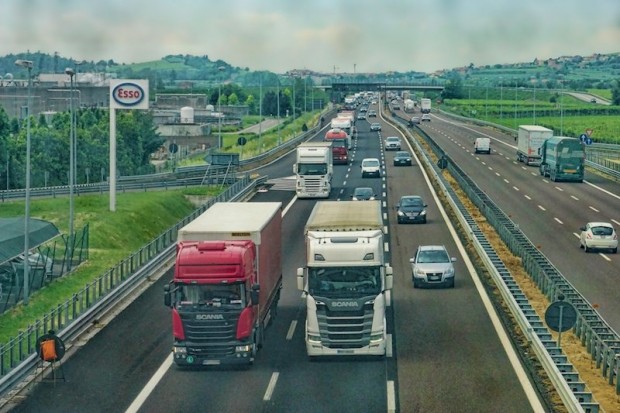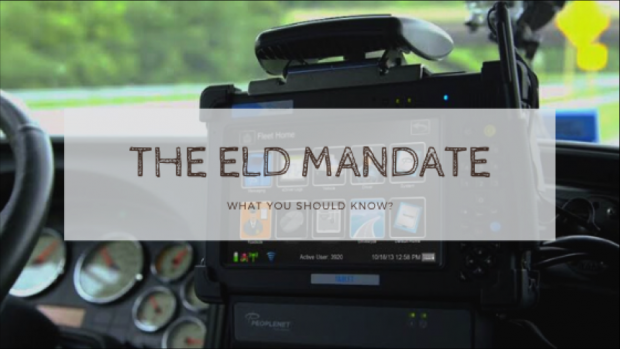The ELD Mandate – What You Should Know
- (Photo : photo)
In 2015, The FMCSA (shorthand for the Federal Motor Carrier Safety Administration) made the announcement of the ELD Mandate. You were probably aware of the announcement and know what an ELD is, but if you've still got some lingering questions that are bugging you, we can set them straight in the following post as we outline all the important information you should know about the new rules.
What Actually is An ELD?
First things first, for anyone who is not aware, an ELD is an Electronic Logging Device. This is essentially an electronic piece of equipment that enables commercial motor carriers and truck drivers to accurately and automatically log and track the hours of service they perform for their employer.
Understanding What an ELD Can Do
As noted, an ELD is an electronic device that accurately records and tracks HOS. It can, therefore:
• Connect directly to the engine of a truck to monitor when it is in motion and when it is not
• Allows the driver to log in and pick options like "On Duty, but Not Driving," "Off-Duty" and "On-Duty" so the fleet manager knows exactly what the driver was doing when he or she was using the truck.
• Display a full record of duty status to allow the driver the opportunity to see how many hours they have worked in a day
• Presents the data in a standard format which can then be transmitted, when necessary, to law enforcement officers and departments in a variety of ways (Via Bluetooth 2.0, USB, email and wireless web services to name a few)
What Then, is the ELD Mandate?
The ELD Mandate is a new set of regulations that were introduced by the FMCSA in December 2015 that was an amendment to the current FMCSRs. The amendments were set out to improve the performance and standards of driver's hours of service.
For fleets that did not use any tracking device yet, they had until December 2017 to fully transition to using ELDs. Whereas, fleets that used automatic on-board recording devices (also known as AOBRDs) had an extended period of up until 2019 to transition to ELDs.
Why Were the Changes Necessary?

Back in 2012, a new law known as the MAP-21 or Moving Ahead for Progress in the 21st Century was put forward to assist the FMCSA in reducing the fatalities, injuries, and crashes involving buses and large trucks. As well as numerous other advanced safety standards, this new law also included plans for the FMCSA to design a new regulation that required all professional motor vehicles needed to have ELDs installed to record their HOS.
Will the ELD Mandate Save the Industry Money and Time?
For all the hassle that might be involved with the transition from AOBRDs or no tracking devices at all to ELDs, there are various ways the industry will benefit from the changes to the law. For the drivers themselves, it will help to save time, time that drivers would normally need to spend physically logging their hours, following the right calculations, and recording it on the right page. Now, all that is required is a simple press of the check-in and check-out options on the device's display screen.
It has been calculated that drivers will save as much as 20 hours a year by using ELDs.
ELDs can also play a part in helping to enhance how precise a company's future projections are on schedule. It is not down to guesswork or estimates anymore, as companies can rely on the data logged through the ELD to understand the availability of a driver. ELDs can also be utilized to reduce truck downtime, fuel costs, and improve safety over time when used in conjunction with a suitable fleet management system.
Are There Exceptions to the Rule Laid Out in the Mandate?
It is interesting to note that there are exceptions to the rules. As the ELD Mandate does not apply to all commercial drivers. The following types of drivers will be fully exempt:
• Drivers who operate vehicles that were manufactured earlier than 2000
• Drivers who are involved in driveaway-towaway services, as the vehicle that is being towed is the product delivered
• Drivers who only participate in short hauls and record in paper logs less than 8 days in a period of 30 days.
If you were ever in any doubt about what the ELD mandate meant for you or your fleet, we hope this post has helped to clear up any questions you had regarding it. You can find out more about the ELD mandate at bestelddevices.org. Including useful information about the features you should be looking for in an ELD and the provider you should choose.

















